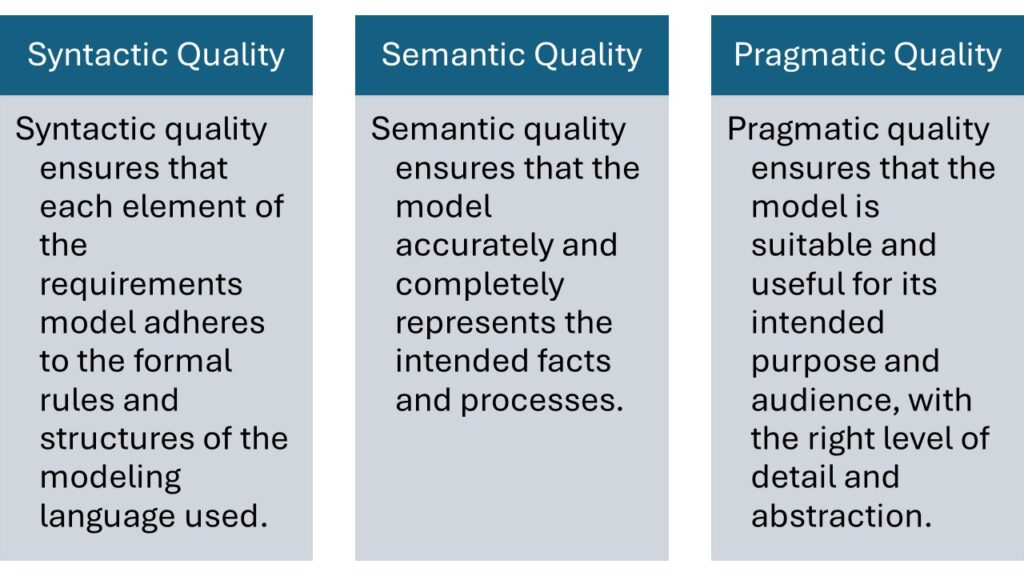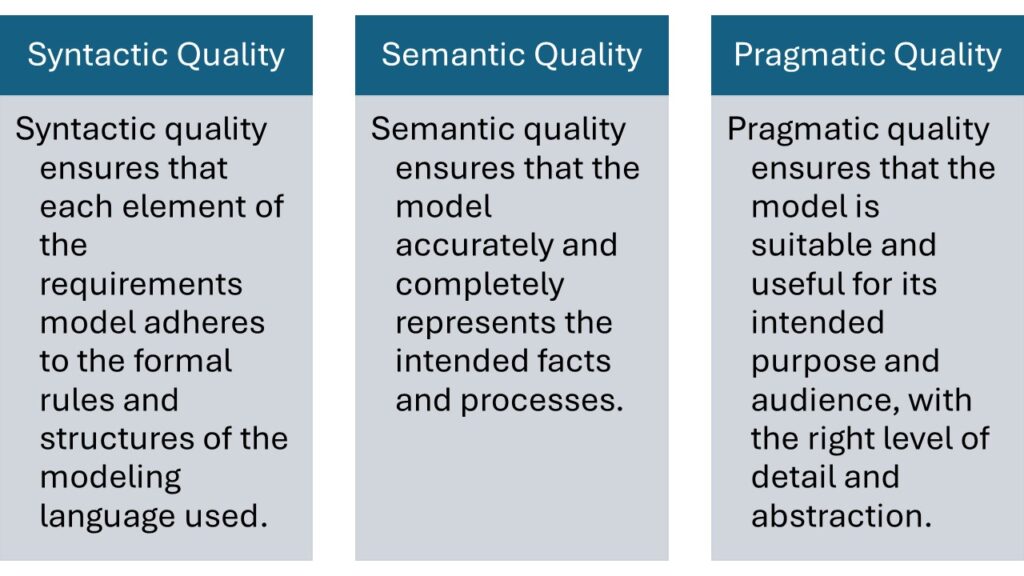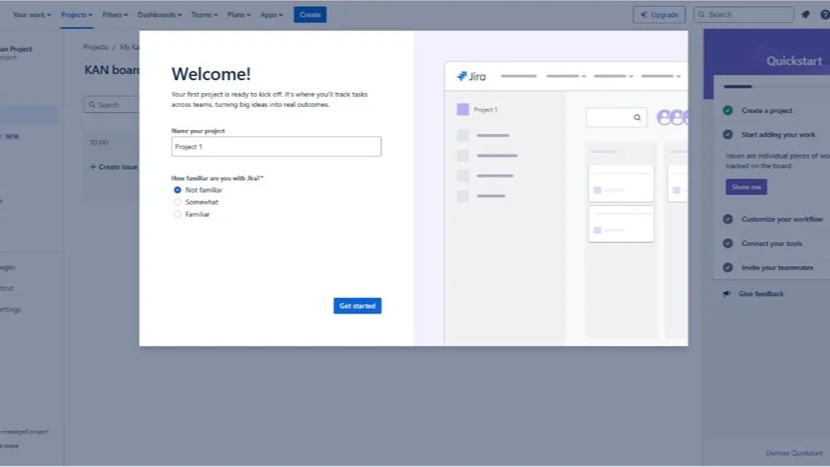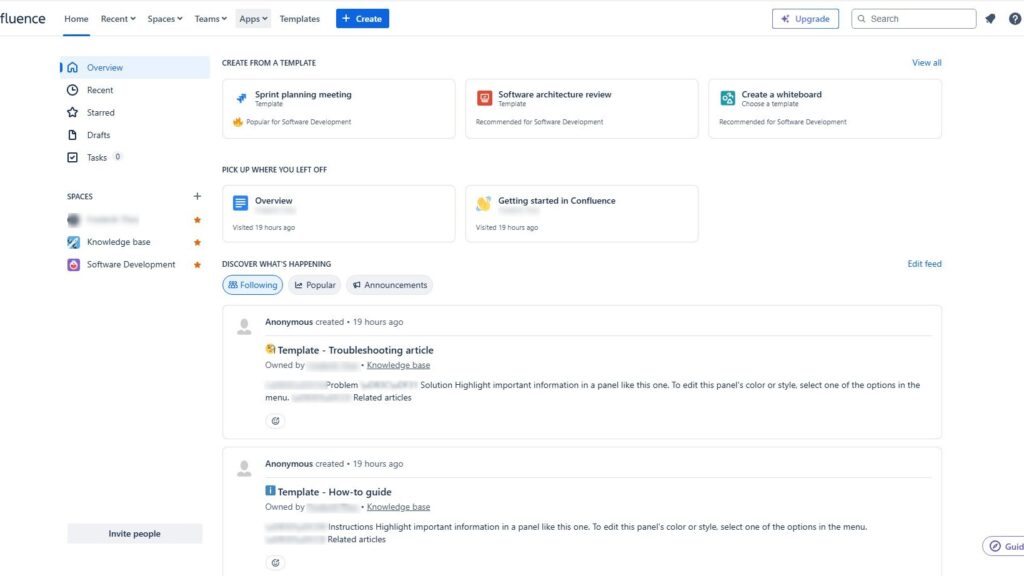When I evaluate the quality criteria of requirements models, I concentrate on three essential dimensions: syntactic, semantic, and pragmatic quality. Each plays a distinct role in determining how clearly and effectively a model communicates information. Syntactic quality ensures correctness of structure, semantic quality secures meaningful content, and pragmatic quality guarantees usability and understanding. Together, they define the overall effectiveness and reliability of any requirements model.
What is Requirements Modeling
Requirements modeling is the process of visually and conceptually representing what a system should do and how it should behave. In requirements engineering and IT business analysis, it serves as a bridge between stakeholder needs and technical implementation. By using models such as UML or BPMN, I can structure requirements clearly, identify dependencies, and detect inconsistencies early. This approach ensures that business goals, system functions, and user expectations align throughout the project lifecycle.
Syntactic Quality: Getting the Basics Right
Syntactic quality ensures that each element of the requirements model adheres to the formal rules and structures of the modeling language used. Therefore, syntactic quality is all about structure. Consequently, it’s the foundation of any requirements model. In similar fashion think of it as the grammar and syntax of a programming language. If I’m working with a UML sequence diagram, I ensure every element meets UML standards. For instance, a synchronous message in the diagram must include both a function call and a reply message. So if I see a reply without a preceding call, I know there’s a problem. Tools like modeling software often help maintain this syntactic integrity.
Semantic Quality: Ensuring Accuracy
Semantic quality ensures that the model accurately and completely represents the intended facts and processes. Therefore, semantic quality is about meaning. Does the model accurately represent what it’s supposed to? For example, imagine I’m modeling an ATM process. After inserting a debit card, the machine should prompt for a PIN. If my diagram shows the ATM asking for the payment amount first, that’s a semantic error. It misrepresents the actual process. This kind of mistake can lead to significant issues down the line.
Pragmatic Quality: Suitability for Purpose
Pragmatic quality ensures that the model is suitable and useful for its intended purpose and audience, with the right level of detail and abstraction. For this purpose it focuses on the model’s usefulness. Is the level of detail appropriate? Is it understandable to its intended audience? Let’s say I’m detailing a state transition in a system. If I only mention the triggering event but skip additional conditions and outcomes, the model might be too vague. On the other hand, too much detail can overwhelm the reader. Balancing this is key.
Real-World Examples
- Syntactic Quality Example: While designing a software module, I used a tool that enforced correct syntax. This ensured that all my sequence diagrams followed the UML rules, preventing basic structural errors.
- Semantic Quality Example: I once worked on a project where the requirements diagram inaccurately reflected user interactions. By correcting these semantic errors, we avoided potential user frustration and system malfunctions.
- Pragmatic Quality Example: During a system overhaul, I created diagrams with varying levels of detail for different stakeholders. Executives received high-level overviews, while developers got detailed, technical diagrams. This pragmatic approach ensured everyone had the information they needed without being overwhelmed.

Conclusion
In summary, the quality criteria of requirements models—syntactic, semantic, and pragmatic—are crucial for creating effective and accurate representations of system requirements. By focusing on these aspects, I ensure my models are robust, meaningful, and tailored to their audience.
Understanding these criteria helps me create better models. And better models mean better systems.
What’s Next?!
Now that you know what requirements modeling is and how it supports clear communication between business and technology, it’s time to explore the next layer — connecting written and visual requirements. Curious how both worlds come together in one model? In my next article, “Integrating Textual Requirements in SysML: A Personal Take,” I’ll share how I combine structured diagrams with textual details to create precise, traceable, and powerful system models.
This text is based on content from the source: International Requirements Engineering Board (ireb.org). The International Requirements Engineering Board is the owner of the copyright.
| Read more about Confluence and How to |
|---|
| Format Text in Confluence Make Lists in Confluence Change the Headings in Confluence Create a Blog Post in Confluence Align Text in Confluence |




